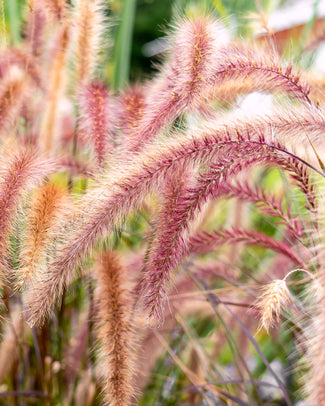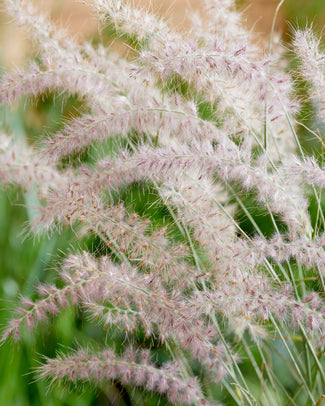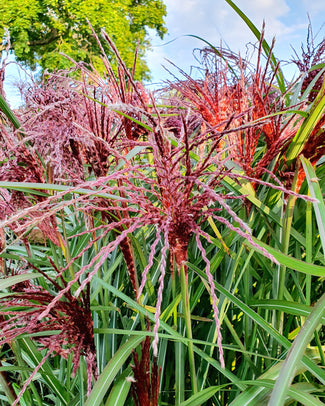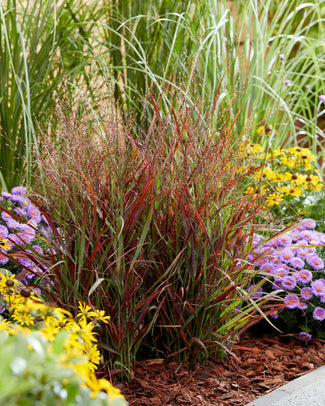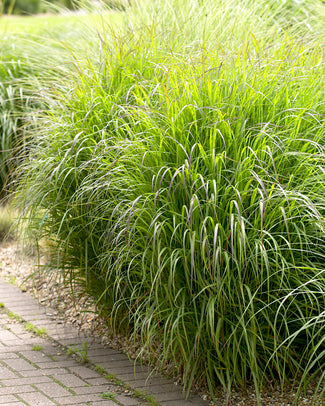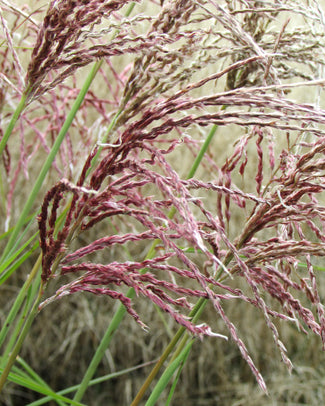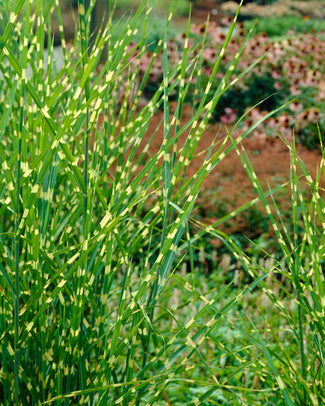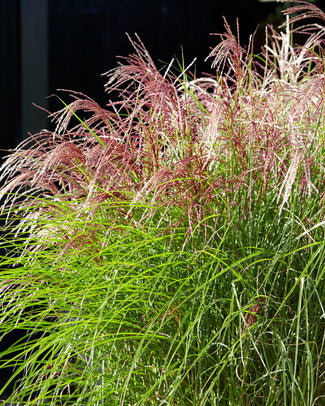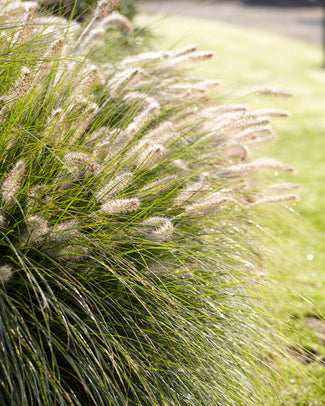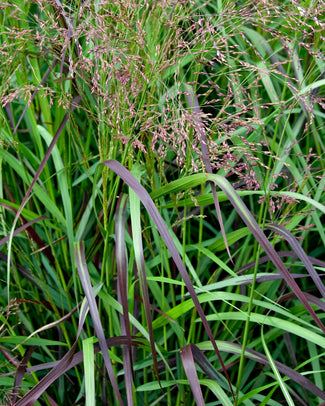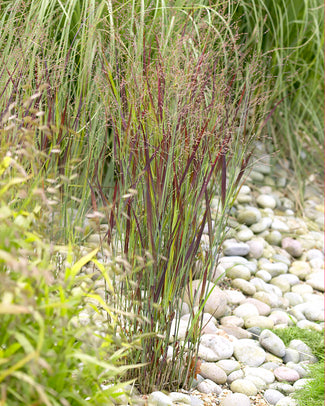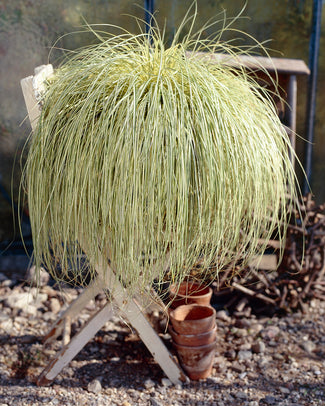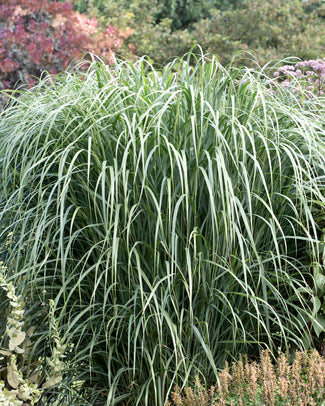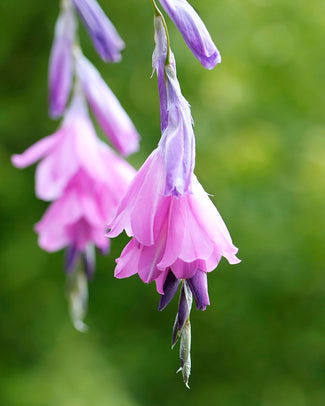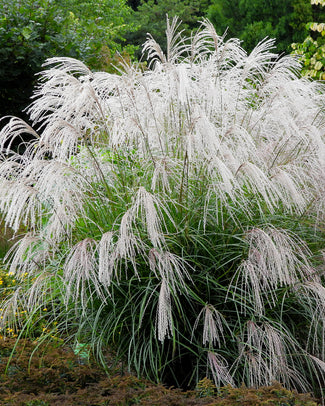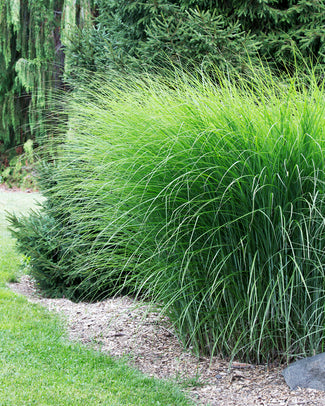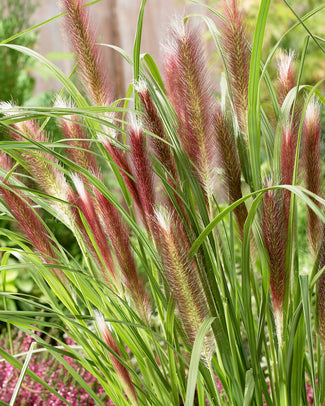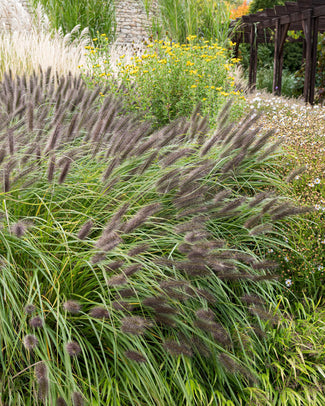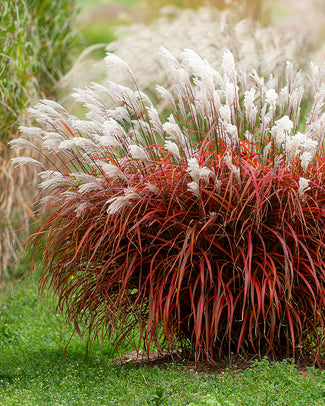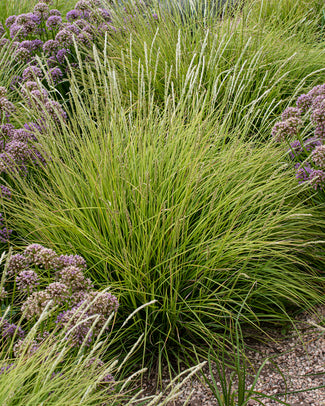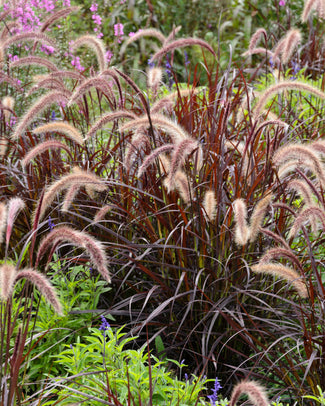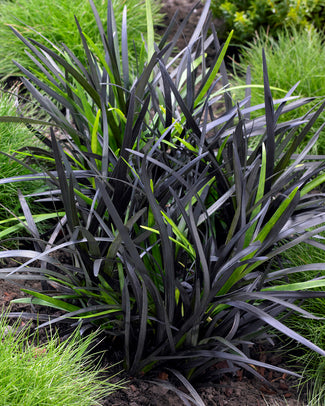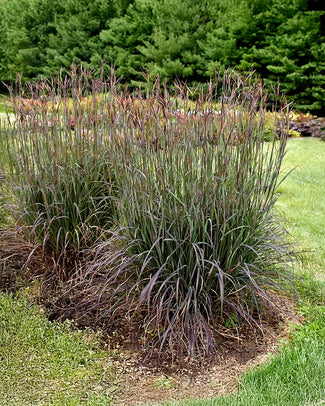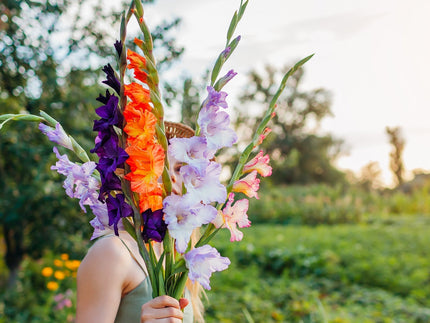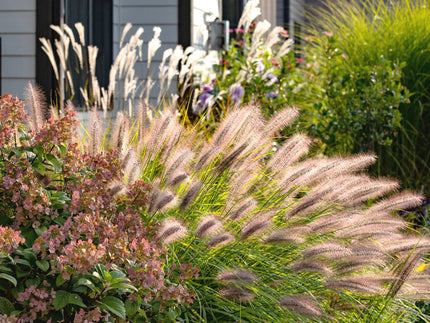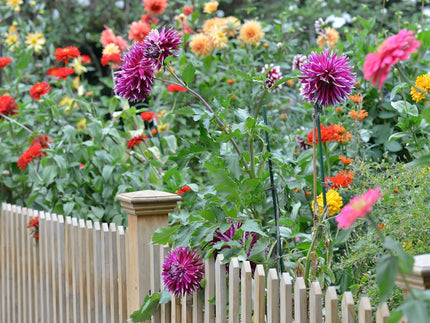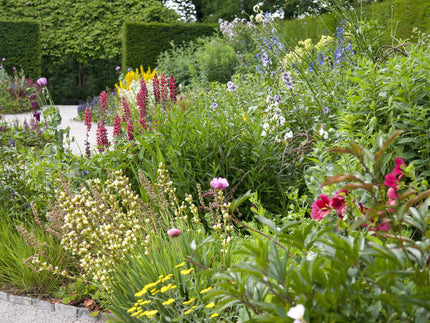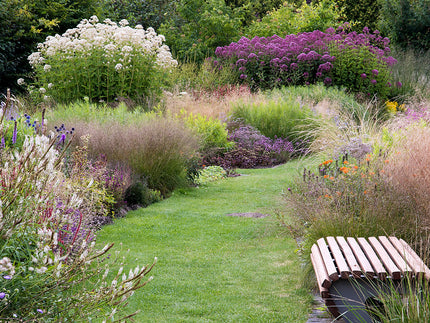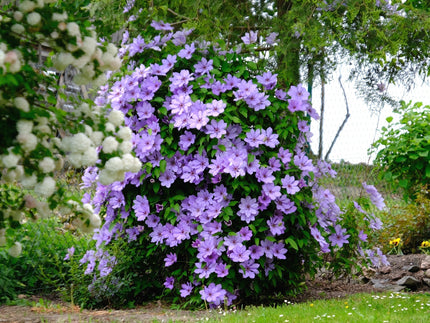How to plant Calamagrostis
Easy to grow and effortlessly attractive Calamagrostis is an ornamental clump forming deciduous perennial grass which produces narrow feathery plumes in summer which continue to provide interest through autumn. The flowerheads often hold well into winter, offering height and movement to the garden and landscape. A mainstay in the prairie planting style, teaming and contracting well with other tall late flowering perennials, such as Echinacea and Rudbeckia. Plant this hardy perennial grass in borders or gravel gardens, or enjoy their low-maintenance charm in large patio containers.
How to plant
- Plant Calamagrostis in spring between February and May, ideally within a week of delivery.
- Soak the roots in water for 3-6 hours prior to planting. Pot into temporary 2 litre (or 15-20cm diameter) pots, using a good quality multi-purpose compost. It’s not essential but you can add grit to aid drainage.
- Plant with the roots fully submerged in the compost. There will be some old foliage from the previous year which is cut at around 10cm. This should be left exposed above the soil surface. New shoots will emerge from the base of these dried stems.
- Grow them on in a sheltered spot outside. They can be transplanted to suitable growing positions after 2-4 months or once growth is established and the plants easily come out of the temporary pots with the soil held intact by the roots. When you see roots starting to emerge from the drainage holes in the bottom of the pot, it is an indicator that the plant is ready to be transplanted.
- When they’re ready to plant into the garden, choose a position in full sun or very light shade. Calamagrostis tolerate most soil types, including loam, clay, chalk and sand. Dig over the area first to aerate the soil and remove any weeds.
- As with all young plants, monitor your new plantings for pest damage and remove any excess growth from neighbouring plants in the border to reduce competition.
- This ornamental grass is fully hardy and doesn’t require winter protection unless temperatures fall below around -15C.
- Water-in after planting and keep hydrated when in growth, particularly during the first year. Once fully settled in, they can cope well with dry conditions.
Aftercare
- ou should enjoy the upright stems of Calamagrostis for as long as possible before cutting them back. You can cut the stems and the foliage of the plant back to around 10-15cm above ground level anytime between autumn and early spring. This is to maintain good health and air movement throughout the clump and makes way for fresh growth which emerges again in spring.
- Calamagrostis forms a clump over time and the show gets better every year. Clumps that have become too large can be dug up and split with a sharp spade in early-mid spring. Each piece can then be planted separately.
- If cutting back the past year’s growth in spring, be careful to avoid cutting the tips off the new foliage as it is emerging.
































































































































































































